|
A blast from the past, part 2
by Dave Bicker
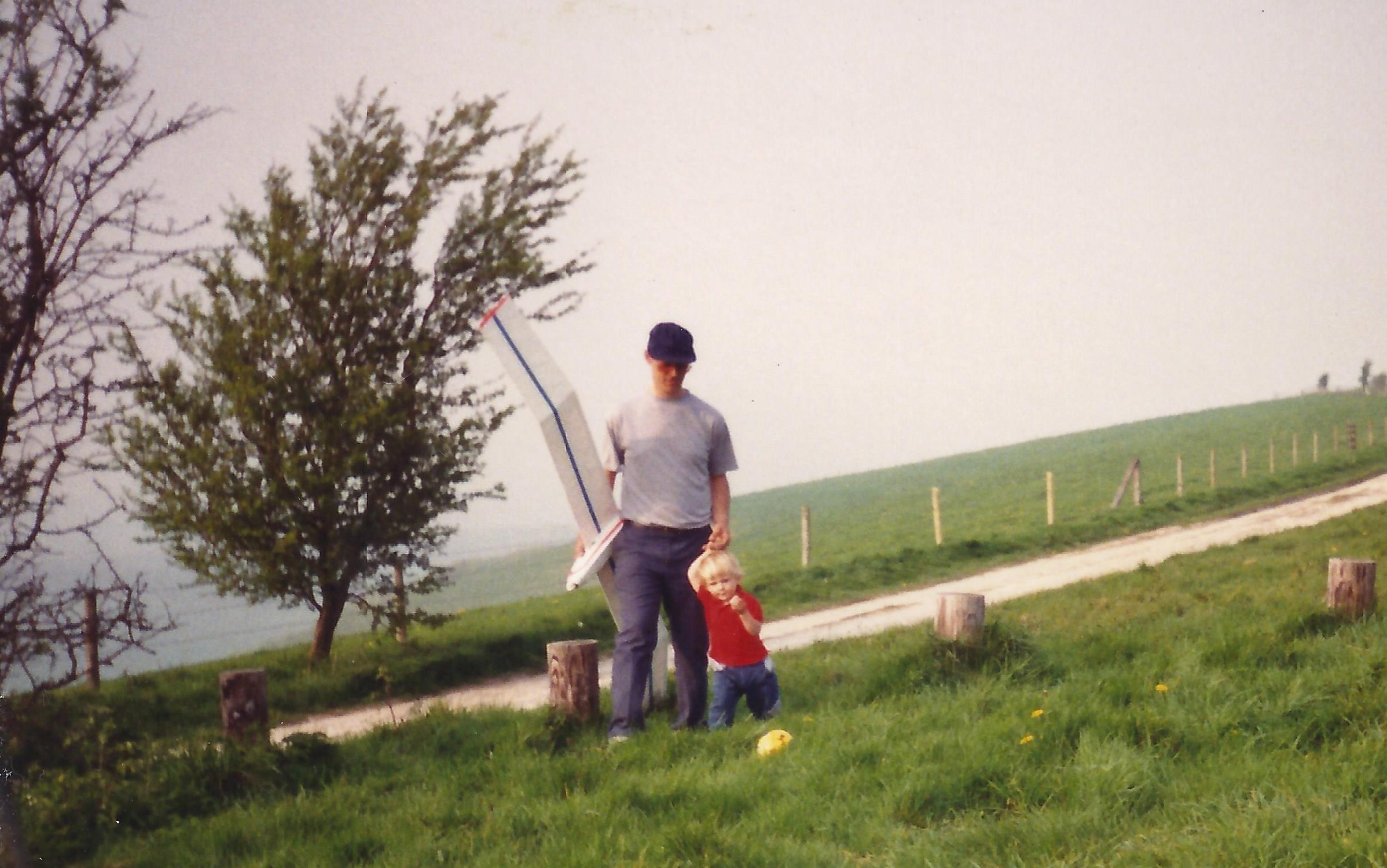
After a hunt in the loft I located my pictures of my early flying years, so I have now pinned down my taking up RC flight to 1993 because my currently 29 years old son, when pictured with me was about 2 years old. I remember him being happy walking on sand on beaches but being wary of long grass & sloping ground, so it loks like I was busy supporting him at the expense of my Electrafly’s wing tip which appears to dragging in the grass!
Slingsby T21B (Sedbergh TX.1) (1/6 scale)
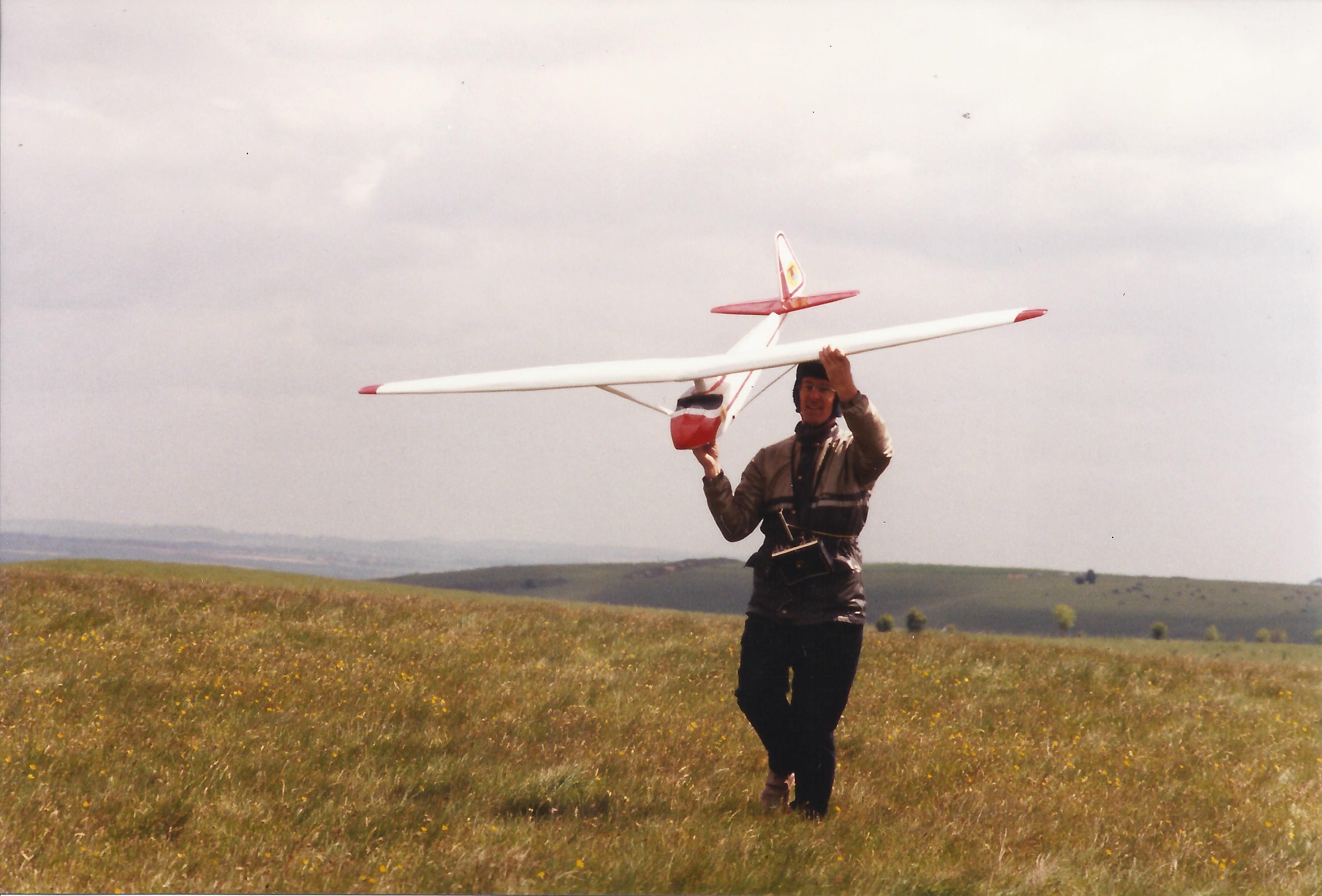
Brief description:
95 were used as a cadet trainer by the RAF from 1944 right up to the 1980s with the T21B version flying from 1947.
Wingspan 54 feet (increased from 50 feet after the first model variant).
226 were built.
Nickname: The Barge (due to its boat-like shape & sedate flying attributes).
Aside: A neighbour who currently lives 2 doors down from me flew them for 2 years as a trainer.
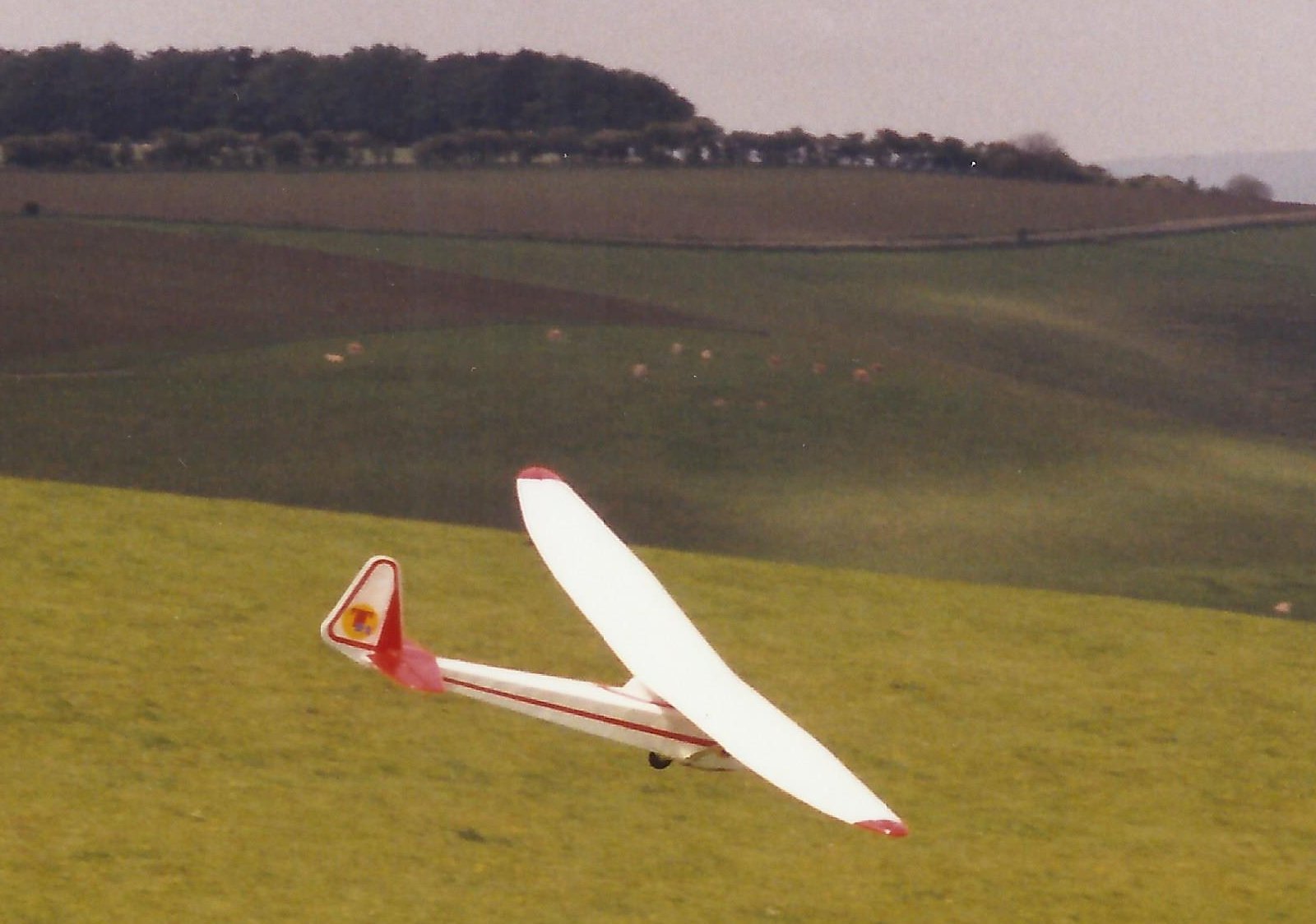 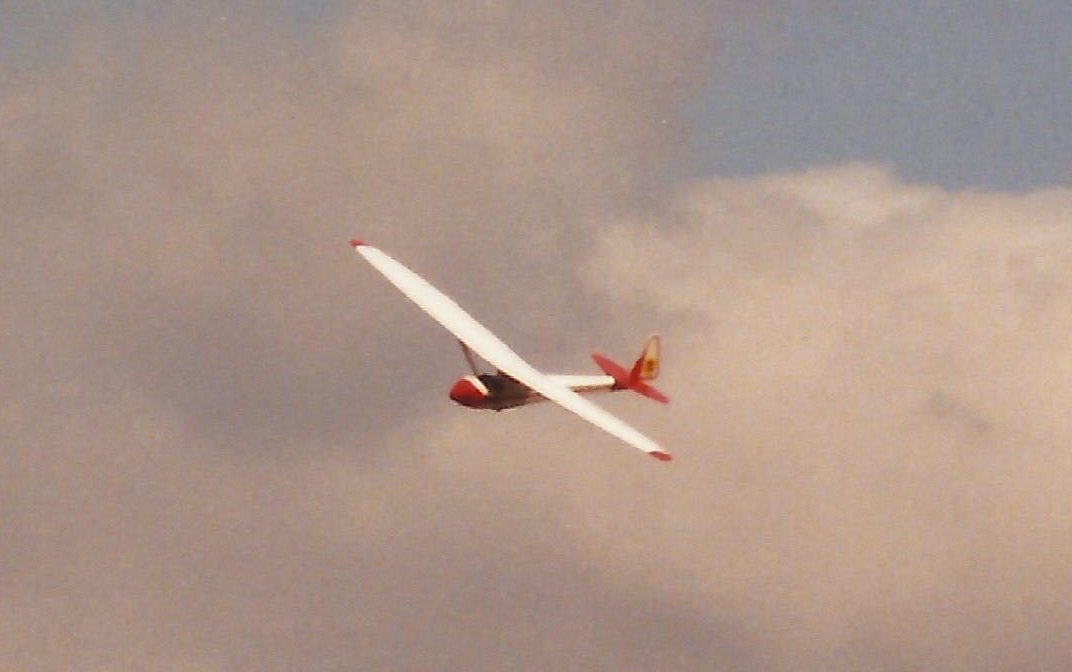
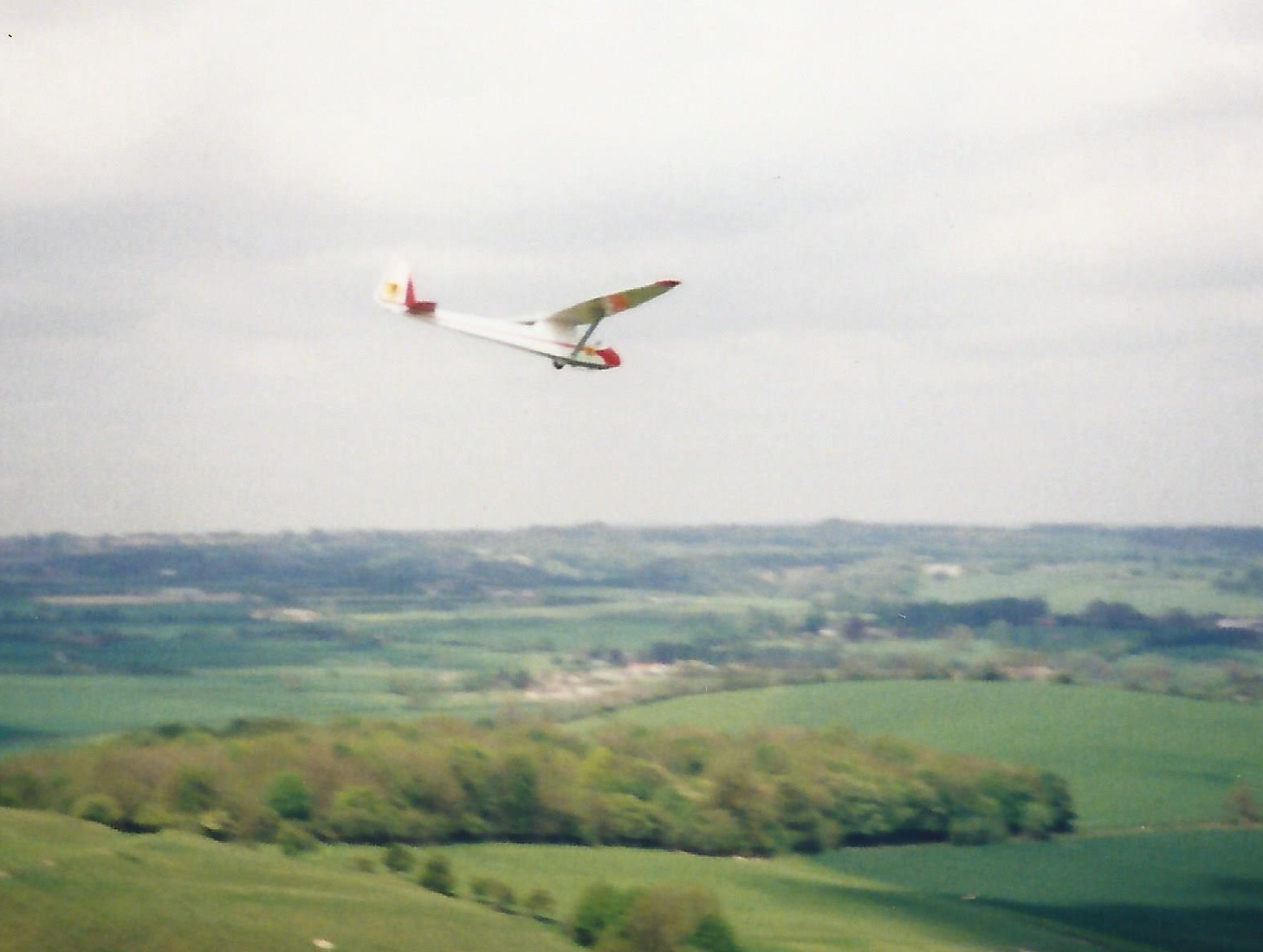
One of my childhood memories was of sitting on my father’s lap in the co-pilot seat of a T21 flying over Tarrant Rushton Airfield on a hot sunny day. It was magical. Although we were several hundred feet up, with the open cockpit you could lean over the side & hear conversations on the ground drifting up to you. I remember very little noise in flight from the glider.
Decades later I was buying balsa in Southbourne Model Shop when I looked up & was amazed to see a rather tatty scale model of the T21 hanging from the ceiling of the shop. It had a 9 feet wing span & had been covered in a dull orange finish. A few visits later I couldn’t resist it & I bought it for £60. As the shop owner lowered it to the floor it appeared to be in fairly good nick – that was until he dis-assembled the wings & handed them to me. As I gripped them lightly I could hear the balsa sheet cracking & creaking. It was the same with the fuselage.
At home I stripped off the covering & found that the majority of the PVA or epoxy glue spots on the geodetics had expanded & contracted so many times in the changing temperatures up at ceiling height in the shop that the glue joints were separating all over the model. There was nothing for it but to cut out all of the faulty glue joints & re-glue them in sequence to keep what strength there was left in the model during the repair.
That done the model was re-covered & servos etc added & then balanced. Balancing required a huge amount of church roof as it had a stubby nose & a long & heavy tail. I think about 3-4 lbs of sheet lead ended up in the cockpit floor! All up I seem to remember that it weighed in at around 7 ½ lbs.
It has a nice sled type skid under the nose that can be gripped sort of like a knuckle duster to launch the model. The model also has spoilers operated by linked rods from the fuselage that should help with landings. They are of a bad design & are the first thing that I plan to change when I restore the model. I’ll fit mini servos in the wings to dispense with the horrible metal linkages to a shared servo in the fuselage that have to be dismantled every time that you separate the wings for transportation.
The date of the first shake-down flight arrived (early 1990s) at Win Green & Trevor kindly took the controls to make sure that it got off the ground safely. It launched ok but I seem to remember Trevor had to dial in a lot of up elevator which I think was because he said that the tail plane wasn’t at the correct pitch. So the model was trying to fly in a nose-down attitude all the time. Before I knew it he passed the TX to me & said “have a go”! I was petrified as I’d never flown anything that big before, but his relaxed attitude to flying it put me somewhat more at ease. I don’t remember how long the flight lasted for but I do remember that my brother had turned up especially to video the flight, so I may well have an early (low quality) video of the flight somewhere). Trevor took the controls again for the landing & landed it out on the top slope, commenting that I needed to watch out for tip stall due to the pointed wing tips.
On other occasions it flew several more times until the inevitable happened & I tip-stalled it on landing which resulted in the whole of the lead-filled nose section shearing off. It was then that I found out that it hadn’t been built correctly. The nose section should have been lined with fibreglass sheet to reinforce it. That issue was corrected & the model was flown a few more times, but I was always on edge due to the risk of tip stalling it & the flight geometry being out slightly because of the tail plane being fitted incorrectly.
So that’s when it ended up back in the storage box back in the late 90s & is still there currently. I do plan to tackle it at some point in the future, but it will need the tail plane sorting, spoiler servos fitted in the wings & the cockpit tidying up – and re-checking all of the glue joints again before covering it again.
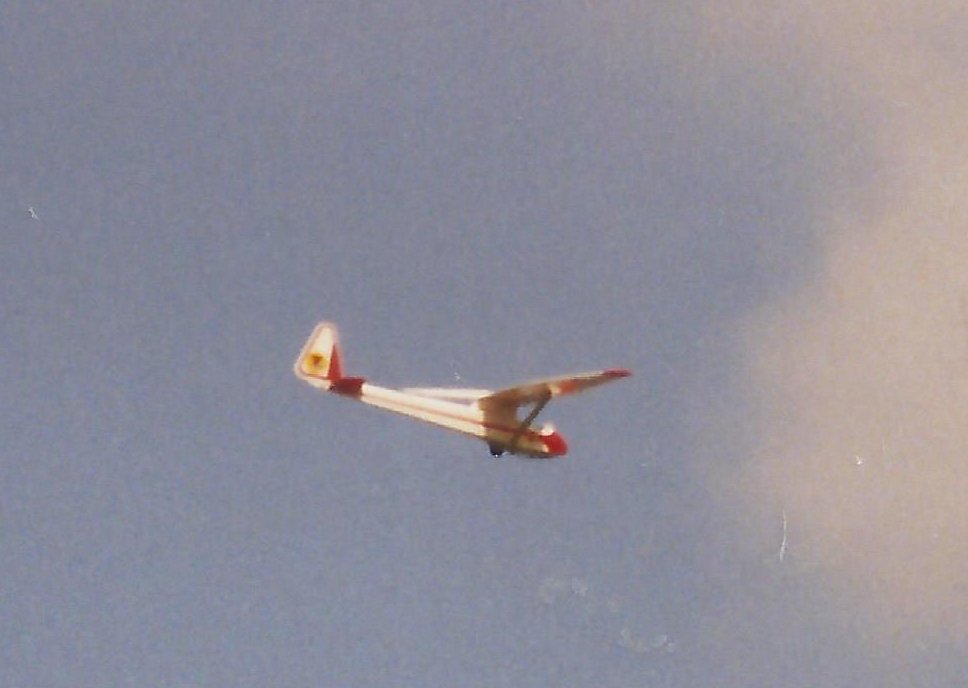
quizas mañana
DTB”
|